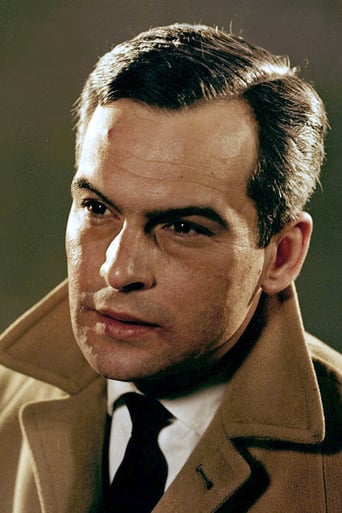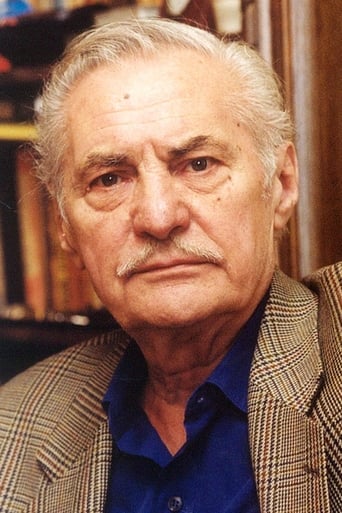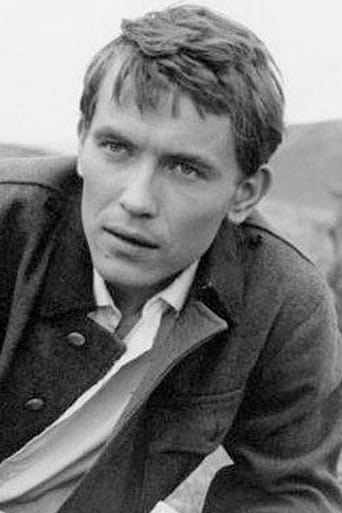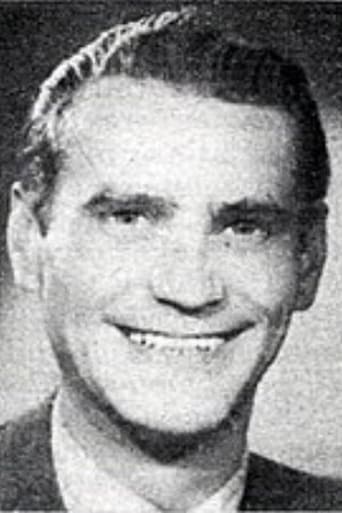SnoReptilePlenty
Memorable, crazy movie
Mjeteconer
Just perfect...
BoardChiri
Bad Acting and worse Bad Screenplay
Fleur
Actress is magnificent and exudes a hypnotic screen presence in this affecting drama.
chaos-rampant
Jancso does it. When Jancso does it, it's a mixture of getting it right and perceptibly missing, both at the same time. He is not perfect, nor seems to strive for it. But he surely has some of the best ideas about films in all of cinema. In the actual films, it seems as if you are watching pure intuition, the sketch rather than the finished film. I am saying this as a good thing. He sculpts in air, most do in marble.He gets just the last note off here, so you leave this thinking of the ways you would do it - a good thing again. It is the scene of betrayal of the whole rebel troop (until then in disguise), which he does in a rather awkward manner.But what powerful devices before that!The main setting is a forced labor camp in the middle of nowhere. We start with a 'real place', the white stucco on adobe walls reflecting barren sunlight. This is gradually abstracted into something else, by repetition and time. It is done so well, it deserves to be studied.The place as the totality of existence: there is no way out, people languish in mindless work and routine, having to please a higher moral authority that decides life and death. Love is always kept at arm's reach. They are all sinners in that place, most of them murderers. It is a bleak view of life, very Hungarian, but you can work with it. A man who must find another prisoner to take his place in the executioner's scaffold, someone worse than him. Someone who has killed more. He does the rounds of the place pleading with officers, cajoling, betraying, a spineless coward despised by everyone. A second man who in order to be set free, has to convince he is not someone else and is betrayed by the first as that person.A father and son playing a game of storytelling chess with the prison warden.So much is handled in just the right way here, I had to hold my breath. The point is that there is no way out of life, except dead. And there are different ways to go, some of them more dignified. The only certain thing is that we all have to go, and you get to see the pain and humiliation of clinging to life that is transient. There is no glory to this, just the way it has to be. Everything else are games that pass the time, storytelling, fiction, deceit and ritual - see if the same invented rituals and thrills do not resurface across poker tables and the films we see.We are eventually unsure if the scoundrel really was guilty, or merely framed. We are unsure if the other man is not who he says. Whether father or son strangled him. Whether or not the rebel leader was among the group.We are in the dark about pretty damn near everything - except that games have been played, with the losers removed from the cosmic round.
MARIO GAUCI
I have made of this most notable of Hungarian films a personal holy grail ever since I laid eyes on an illustrated two-page spread found in an old British magazine of my father's entitled "The Movie" – and now, over 20 years later, I have finally managed to track the thing down and, thanks to the valiant R2 DVD label Second Run, add it to my ever-increasing eclectic home video collection. For the record, despite knowing of its imminent release on DVD, I was seriously contemplating traveling to London for last week's big-screen showing of THE ROUND-UP at the Curzon Mayfair (with Jancso' in attendance, no less) – but, alas, it is just as well that I didn't go because of what occurred over here a couple of days prior to the event: a tragically unnecessary death in the family which, worse still, turned into a national tragedy (with long-term social and legal repercussions to boot). But life, pitiless and unjust as it is, has to go on and, slowly but surely, I have now jumped back into my old routine of film watching and reviewing... Although there have been other noteworthy Hungarian film-makers before (Paul Fejos) and since (Istvan Szabo), Miklos Jancso' is still perhaps the most important. Ironically, while he was the first one I personally became aware of, my viewing of THE ROUND-UP has actually been my very first encounter with his work – although, now that the first step has been taken, it will be followed by three more in a few days' time. Sometimes it can happen to a film buff that the actual experience of watching the movie, about which one has heard a lot and eagerly longed for, turns out to be underwhelming but, thankfully, this has not proved to be the case for me with THE ROUND-UP. Indeed, the phrase "unlike anything you've ever seen before" is often freely banded about by unimaginative film reviewers – but this description is unquestionably apt when applied to Jancso''s masterpiece.In that enticing and insightful article I mentioned above written by Jancso''s first assistant director on the film itself (and which I immediately re-read upon the film's termination), it is stated that while THE ROUND-UP was based on factual events which had taken place in Hungary in 1869 and could have easily been shot on the actual locations of castles and fortresses, Jancso' sought a different visual approach altogether with regards to sets and costumes – "half-way between reality and abstraction", as he brilliantly puts it. Since I found myself wholeheartedly agreeing with other observations he made on the film, I don't see why I can't quote him some more: "It has a coherent, easy-to-read story – comprehensible at a single viewing – and at the same time a deep, intellectual, almost abstract parable".The abstraction being alluded to is not restricted to visual (literally, black and white) terms alone – where the stark whiteness of the prison-fortress walls and the hooded Hungarian convicts memorably contrast with the black capes and uniforms of the Austrian oppressors – but also to its very narrative style: while it becomes clear early on that the subject of the relentless interrogations is the identification and capture of legendary rebel leader Sandor (who never actually appears in person but whose presence permeates the entire film), people appear and disappear with insistent frequency and, although there are definite characters which take precedence over others, there is no true main central figure one can clearly identify with and root for.Thematically, it is oppression and degradation which are the key elements: right from the animated prologue at the start displaying a succession of torture devices, we later watch men made to stand in the rain and a woman stripped naked and whipped to death with canes (the sight of which sends her despairing spouse leaping to his death). But the oppressors' ultimate weapon of humiliation is treachery: through vain promises of instant freedom, prisoners – and, at one point, a grieving mother and, later still, father and son – are repeatedly induced to betray one another (via abrupt, silent motions) but, instead of liberty, they are rewarded with a bullet in the back, the retribution of their own people and, in the supremely ironic finale, cold-blooded mass extermination. In this context, the character of Gajdor is especially poignant (and even amusing in a blackly comedic way) as he pathetically keeps reminding his captors that, even though he has already fingered several worse criminals than himself, he is a prisoner still. Interestingly, this paradox can also be applied to the ingenious location of the prison-fortress (within which practically the whole film is set) – rebuilt specifically for this production in the middle of uninhabited plains that stretch as far and wide as the eye can see.Miklos Jancso' is renowned for his rigorous visual style and, even from this one sampling of his work – albeit that which is generally perceived as being his chef d'oeuvre – to say that I was rightfully impressed would be putting it mildly. The constantly moving camera, on the one hand encircling the prisoners as if it was one of them and encompassing wide vistas of soldiers astride their horses on the other, necessarily limits the utilization of close-ups to the barest minimum – as if purposefully adopting the impassive stance of an historical observer. For this viewer, it literally wove a mesmeric spell the likes of which I have only experienced once before during a movie – Robert Bresson's A MAN ESCAPED (1956) which, perhaps significantly, also deals with incarceration.
blacklove
Do I believe that some films are only for filmmakers? Yes! This is a film only for the absolute lover of cinema. Not for those who proclaim loudly, "I love movies!" but have never seen a film by Ingmar Bergman, Luis Bunuel, and Federico Fellini. In fact, if you have never heard those three names, or if you have only heard those names but are not familiar with their work (and are not interested in their work), then you are not a lover of cinema and The Round Up is not the film for you!The Round Up is directed by Miklos Jancso (pronounced "Yahn-cho") who is considered to be one of the first stars of the Hungarian New Wave. Jancso had studied law (holds a doctorate), ethnography, and art history before he entered the Budapest Academy, from which he graduated in 1950. The style for which Jancso would become famous- a style of extended long takes sustained by rhythmic tracking movements of the camera and optical traveling through the zoom lens- was displayed to the world at Cannes in 1966. Incidents of historical events from the Hungarian past are the focus of many Jancso films, and is the focus of The Round Up. It is a film about the political police of the Austro- Hungarian monarchy as they attempt to unmask Sandor Rozsa, the chief of a Rebel army group during the 1848 Revolution, which was led by Lajos Kossuth, who is now operating as a local bandit. The police round up hundreds of prisoners who are mostly peasants, herdsmen, suspected outlaws, but most of them innocent civilians. From then on the viewer gets to see scenes of interrogation, torture and political terror to force inmates into mutual betrayal. This is a film that is aesthetically stark and visually stunning. The mise en scene camera work will impress most filmmakers, but their is no linear three act structure storytelling here. This is another reason why I say this is a film only for cinema lovers. What you get from this film is great visual style, not a manipulated emotional connection to the story. Yes, it is horrific to see scenes of torture, but because you don't get to truly know and identify with one or a few characters emotions don't resonate. This film is only to be watched to observe a director with great visual style. The Round Up demonstrates that Jancso was a master of the Hungarian New Wave aesthetic whose cinematic structure was dependent upon widescreen composition, the long take, and the zoom lens. Introduction of Jancso's mature personal symbols and stylistic obsessions are put forth in this film, they include: the use of nudity to signify humiliation, the totally impersonal depiction of cruelty and violence, the menacing image of incessantly circling horsemen on the empty spaces of the plain; the balletic choreography of the camera and groups of actors within the frame; the replacement of characterization through dialogue with bureaucratic jargon, slogans, and songs; and a densely interwoven music track combining folk and classical melodies with incidental sound. To sum up, this is a work for those only interested in seeing great artistic visual style! Works Cited: Cook, David A. "A History of Narrative Film, Third Edition" 721-722 Emory University: W.W. Norton and Company 1996
lizard-18
The plot description doesn't say it all, by any means. Thundering hooves, veiled and wailing women, desolate landscapes with waving seas of grass and the occasional forbidding stone fortress or burned house, this movie appeals to nearly all of the five senses. It's been three years since I saw it first, and scenes still flash vividly through my head. The harsh faces of the guards, the equally harsh faces of the prisoners. Blunt and brutal deaths. And overhead, the sun burning down, always.





